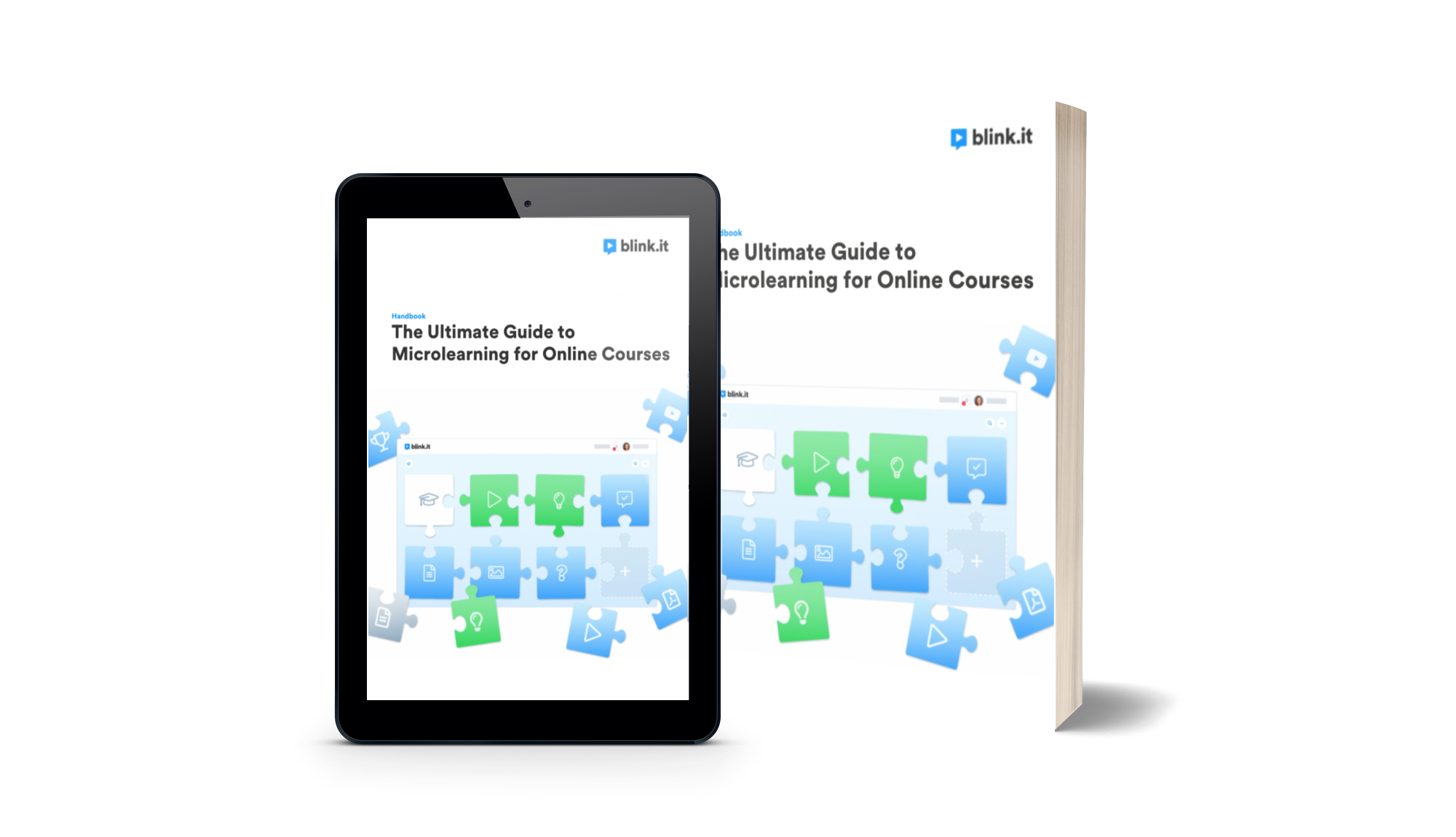In L&D, microlearning has been one of the most popular eLearning methods in recent years. But even here, mistakes creep in from time to time. Find out now how to avoid them and get the most out of your microlearning. Small spoiler ahead: planning is the be-all, end-all in microlearning!
Microlearning = compact learning units that only take learners a few minutes to complete. Here you can find an example how to start microlearning in 3 steps.
For most L&D experts, the concept of microlearning sounds simple and effective. And it is! But as with all training, there are a few things you should keep in mind. How can you avoid mistakes and improve your microlearning in the long run? Just keep reading.
Mistake 1: Not aligning microlearning with employees
Problem:When planning training concepts, the most important thing is often forgotten: The actual learning objective of your training. In most cases, HR professionals are concerned with closing performance and knowledge gaps for their own employees. What exactly is your goal?
Solution: Identify knowledge gaps and clearly define learning objectives
The goal should not be "finish the training", but concrete changes. Once you have identified which competencies and knowledge your employees are lacking, you can align the content of your microlearning accordingly. This is true for all training methods - but in microlearning, goal setting is especially important. Not until you know exactly what your employees are supposed to learn can you break down the knowledge into small learning units that build on each other in a meaningful way.
To ensure that your employees really participate, you should make the personal benefits of further training clear to them. Create awareness for learning in the workplace and involve learners directly in setting goals!
Mistake 2: Use microlearning for all training measures
Problem: Microlearning is suitable for many different training topics, but not for all of them! If you use microlearning for unsuitable topics, your employees may not take away anything at all. Microlearning is one method among many, and not a one-size-fits-all solution.
Solution: Align learning content and method
Soft-skills training or product and knowledge training, for example, can be wonderfully implemented as microlearning. A digital learning library – that is, a repository of learning on demand – is also suitable for microlearning.
Long-winded topics that require complex technical skills, for example, should rather be taught in a different form. For example, the operation of a complex machine is better learned directly on site or with blended learning. In this case, it's especially valuable to have an expert on hand to practice the workflows with your employees.
Mistake 3: Long and inaccessible microlearning courses
Problem: When it comes to microlearning, "Short and sweet!" is the rule. If the learning units are too long, your learners will lose motivation. The wrong technology also leads to problems: Complicated programs, lengthy registration processes or software that’s too slow also decrease your employees' motivation to learn.
Solution: Optimize delivery and presentation of learning content
To increase your employees' willingness to learn, you should remove all possible hurdles: Most of the time, it's a lack of time and overly complicated technology that interferes.
Keep learning units short! In many online courses, we still see complete PowerPoint presentations uploaded as one learning unit. This is definitely too long. Therefore, make sure that your individual content can be completed in a few minutes. We recommend the 2-minute concept.
Make technical access easier! Use a learning platform that is as intuitive as possible and that all your employees can access at all times. Of course, there are employees (or trainers) who resist digital training. But there are a few ways to convince technology skeptics. First and foremost, your learning content should be mobile-optimized. This is the only way to take full advantage of the basic idea behind microlearning - to learn quickly on the go.
Mistake 4: Microlearning content for a special occasion
Problem: Creating learning content takes time, and this also applies to microlearning. Many L&D professionals, trainers and coaches therefore associate microlearning with an additional workload, but it doesn't have to be.
Solution: Develop universal learning content for different purposes
Design digital learning content so that you can reuse it. For example, to keep track of your learning content, you can create your own microlearning library.
Create a template course on your learning platform in which you collect all your learning content on various topics. This way, other colleagues can also access the training resources and develop new microlearning courses.
Mistake 5: Lack of evaluation of your microlearning courses
Problem: Some HR managers already use microlearning in their companies - but forget to check whether the measures really fit the set goals. As a result, some microlearning courses are not as effective as they could be.
Solution: Check the effectiveness of the learning units
As an HR manager, you should evaluate each of your microlearning courses after completion. What content worked well? Where were there problems? Was there a point where many employees dropped out of the course?
The evaluations of your courses help you make your microlearning even better and avoid mistakes in the future. Another advantage: By analyzing your courses, you can check whether the goal and the implementation still match.
Despite these potential mistakes, microlearning is a very effective training method. And now you know what to look for when creating microlearning for employee training!
To help you create your microlearning course, we're giving away the Ultimate Guide to Microlearning for Online Courses: In the free guide, you'll learn step-by-step how to make your own microlearning-style online course a complete success.











